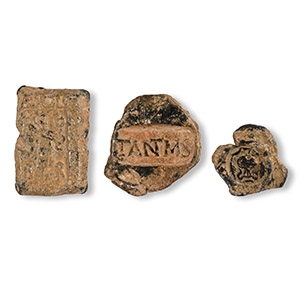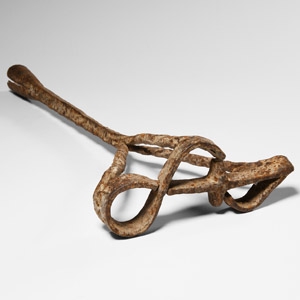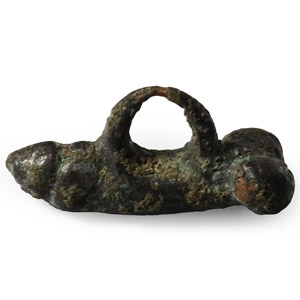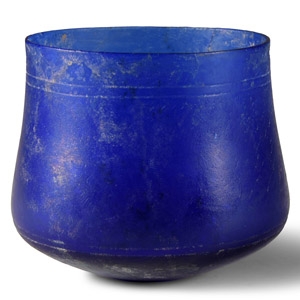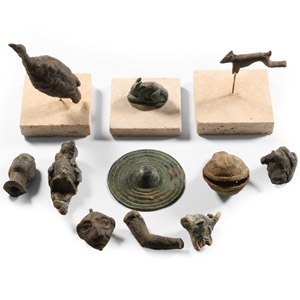Home > Auctions > 3 - 8 September 2024
Ancient Art, Antiquities, Natural History & Coins
Auction Highlights:
UK private collection before 2000.
Acquired on the UK art market.
Property of a London gentleman.
Acquired 1980-2015.
Ex Abelita family collection.
Old private collection, 1980s.
European art market.
Cf. Ruseva-Slokoska, L., Roman Jewellery, Sofia, 1991, item 191.
Ex Louis-Gabriel Bellon (1819?-1899), France.
Private collection, acquired on the French art market in 2009.
From the collection of a gentleman, acquired on the London art market in the 1990s.
Acquired 1990s-early 2000s.
East Anglian private collection.
See Baratta, G., 'Roman Signacula / Una particolare categoria di signacula: marchi per legno, pellame ed animali', in Mayer M., Olive, G., Baratta, G., Guzman Almagro, A.(ed.), XII Congressus Internationalis Epigraphiae Grecae et Latinae, Barcelona, 2007, pp.99-108, figs.3,7, for similar stamps.
Branding stamps or signacula, in particular those with large single letters, were used for marking livestock to identify the ownership, the breed, the quality and other features of the animal. The signacula were usually made in bronze, but iron examples are also preserved.
Private collection, England.
Cf. Ruseva-Slokoska, L., Roman Jewellery, Sofia, 1991, item 248, for type.
Ex German art market, 2000s.
Acquired from an EU collector living in London.
From the collection of Surrey, UK, gentleman.
Cf.Beutler, F. et al., Der Adler Roms. Carnuntum und der Armee der Cäsaren, Bad-Deutsch Altenberg, 2017, item 758, for type.
Previously with a London, UK, gallery, 1990s.
Ex JL collection Surrey, UK, early 2000s.
This lot has been checked against the Interpol Database of stolen works of art and is accompanied by search certificate no.12035-214140.
See Metropolitan Museum of Art, accession no.17.194.155, for a deep purple example of the type.
Ex H.
Norry collection, 1980s-1990s.
Cf. Ruseva-Slokoska, L., Roman Jewellery, Sofia, 1991, item 54a, for type.
From a collection acquired on the UK art market from various auction houses and collections mostly before 2000.
From an important Cambridgeshire estate; thence by descent.
Property of the vendor's grandfather, thence by family descent, circa 1985.
From the private collection of a New York, USA gentleman.
Cf. Petcu, R., ‘Swastika-shaped fibulae with horse-head decorations (Almgren 232) from the Roman period in Dobrudja (Moesia Inferior)’ in Studia Antiqua et Archaeologica, 25(1); pp.113-122, fig.4.
In the 3rd century A.D., several examples of fibulae in the shape of four horses’ heads forming a swastika (type Almgren 232) seem to be related to the creation of the Illyrian cavalry corps in Roman army. Many examples of these military fibulae were found in ancient Roman Dacia (Romania), in Roman Illyricum and Moesia.
709 - 720 of 3369 LOTS

.jpg)

.jpg)
.jpg)
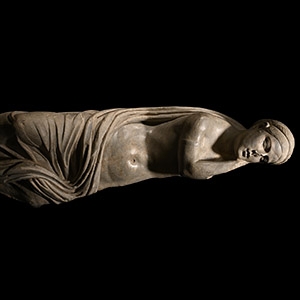
.jpg)
.jpg)

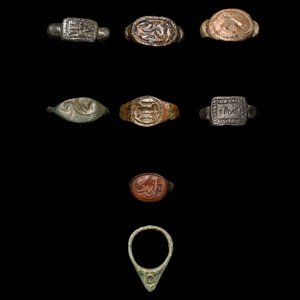
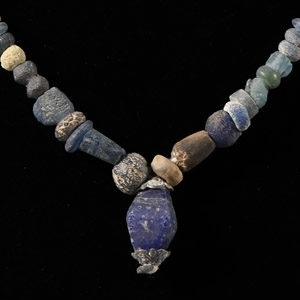
.jpg)

